The Lotus Carlton Is Built For Absolutely Bludgeoning Speed
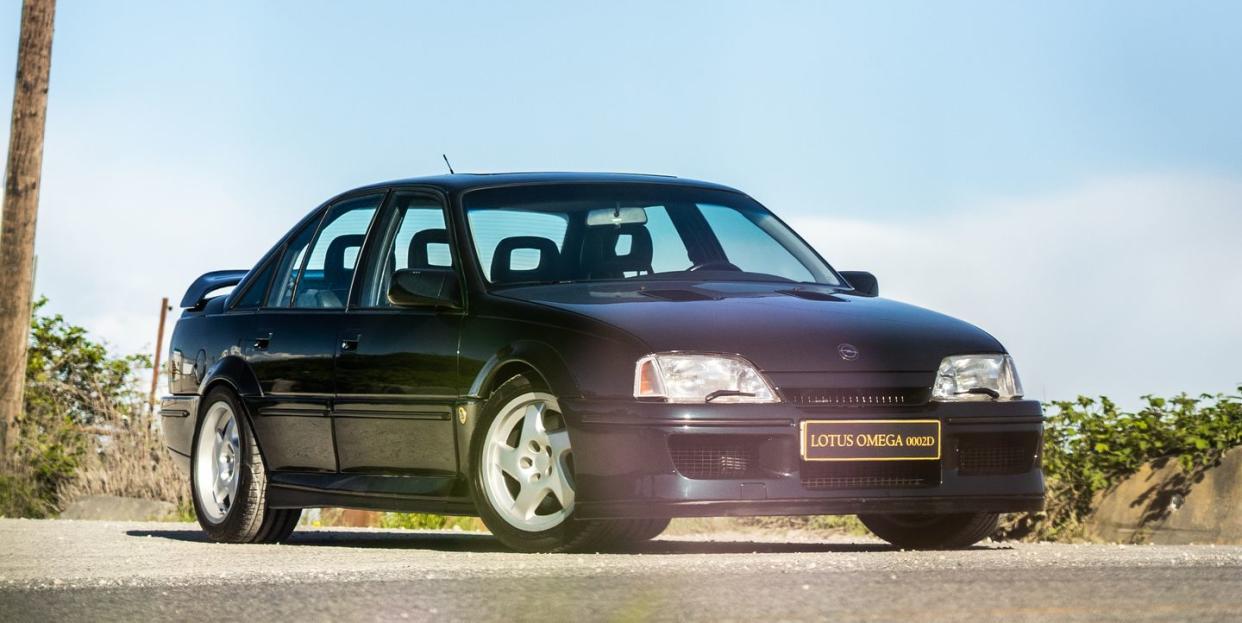
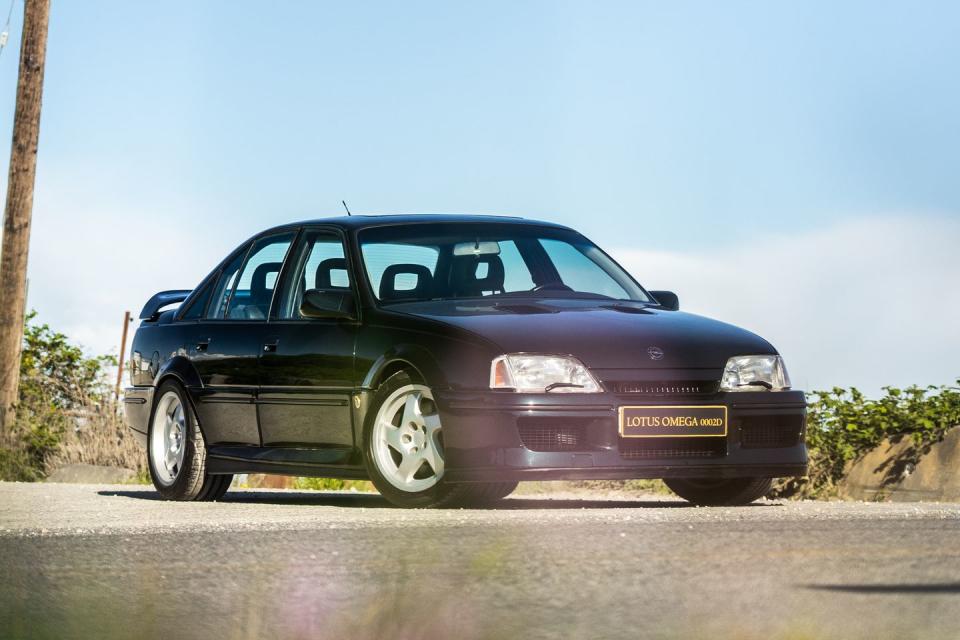
November of 1990 found the UK's House of Parliament in an uproar. “It is ludicrous that motor car manufacturers should be advertising cars that have maximum speeds of 140, 150, and 170 mph,” said Sir Anthony Grant, “These are cars which require the skill of Nigel Mansell to operate them safely.” “Will the honourable Gentleman join me in condemning especially the heavy publicity that has been given recently to a Vauxhall Carlton which is capable, apparently, of achieving 170 mph?” chimed in Alex Carlile, MP for Montgomeryshire, “It should not be available for public purchase.”
But it was.
If it were 1990 and you were capable of scraping together the 48,000 pounds sterling required to purchase this relatively demure-looking sedan, you'd have the keys to one of the fastest cars on the road at the time. We're talking not just BMW M5 fast, but Ferrari fast: line this thing up against some London banker in a then-new Ferrari 348, and the Vauxhall would bloody the Italian's nose. This level of performance in a family car where the base engine was a meagre 1.8L four-cylinder. The closest American equivalent would be if you could walk into a Ford dealership and buy a Taurus SHO with two engines.
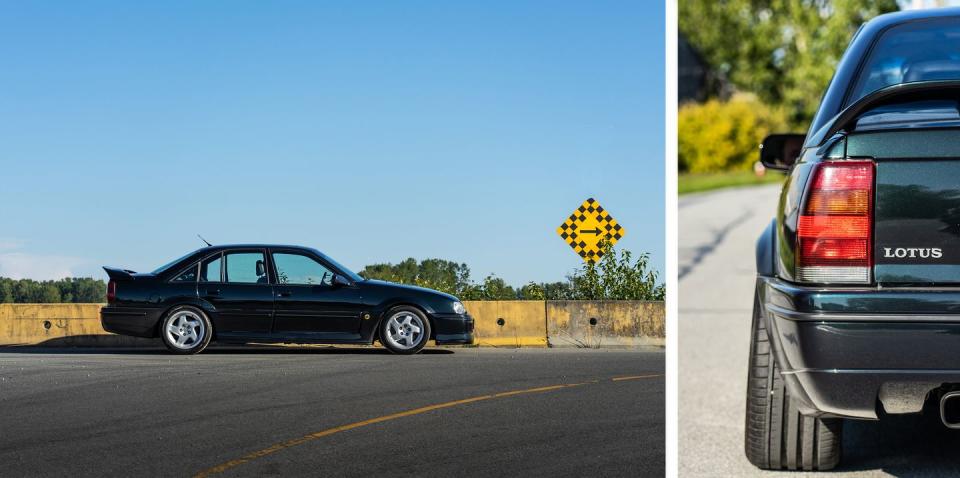
Four hundred horsepower. Twin Garrett T25 turbochargers huffing out 415 lb-ft of torque. A six-speed manual gearbox from a Corvette ZR-1. Top speed rated for 176 mph but it'd peg the speedometer and run to over 180 mph. Maybe 190 mph. No wonder the politicians were all riled up. That's not a Vauxhall. It's a public menace with four doors.
Or rather, public menaces. There were two versions of this wheeled Anti-Social Behavior Order, the Lotus Carlton and the Lotus Omega. The former was right-hand-drive, created out of a Vauxhall Carlton, Vauxhall being GM's UK division. The example we have here is an Omega, the left-hand-drive version based on the sedan sold by GM's German outfit, Opel. It is the second one ever made, and was used as a press demonstrator in its day.
The Lotus Omega and Carlton may be thought of as analogous to the Jaguar Mk II, as these are cars that come with a certain... reputation. They were highly prized by thieves, and basically untouchable as a getaway car. The high-performance version of the Vauxhall Senator often used as a police pursuit car came with a 24-valve, 3.0L V6 that made about half the horsepower of this Lotus sedan, so the criminal element was often able to show clean heels to the bobbies before they could manage the traditional, “'Ullo, 'ullo, wot's all this then?”
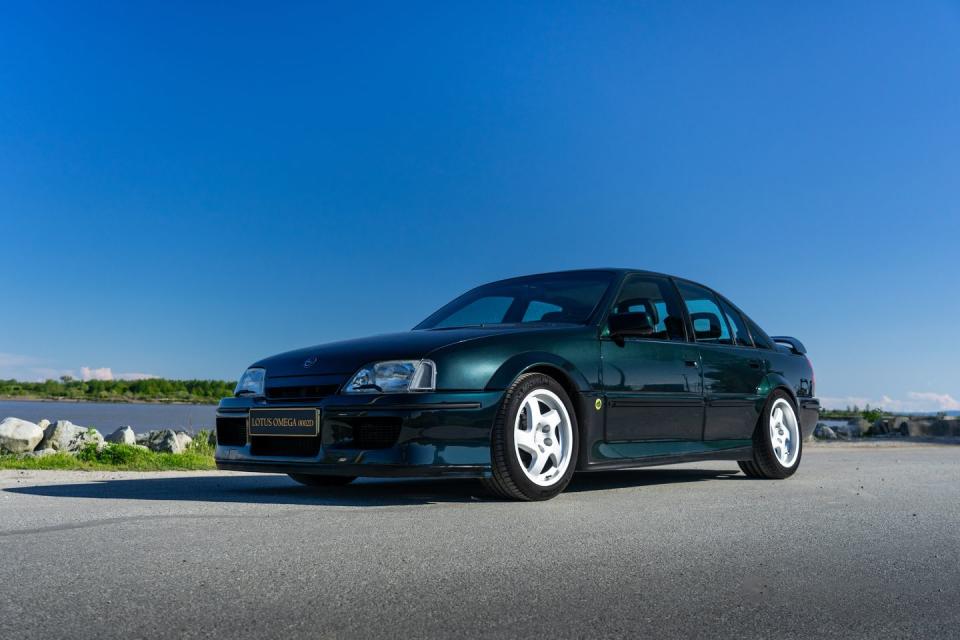
In the UK, this led to a lot of newspaper headlines shouting about public roads being menaced, as well as the aforementioned political pulpit-bashing. The Lotus Carlton had a silly, upper-crust name, but it was a genuine bad boy.
This Opel-badged version, which belongs to collector Uli Jaeckel, escaped 1990s controversy because it is German, and Germany has autobahns. When the owner of an alpha-dog Omega wanted to let the twin-turbos off the leash, they would at least not be breaking the law.
While an M5 was used as a benchmark in development, the experience of one of these Lotus-prepared super sedans is completely different. Power comes on in a surge of boost from around 2500 rpm, the freight-train shove of an invisible hand compressing your chest. The nearest parallel would be an contemporary Alpina B10 Biturbo, although the Lotus is more powerful. This is a relatively heavy executive sedan, built for high-speed highway running rather than trackwork or country lanes. The back squats on the 17” dished Ronals, and it hauls itself towards the horizon with brutal and inexorable force.
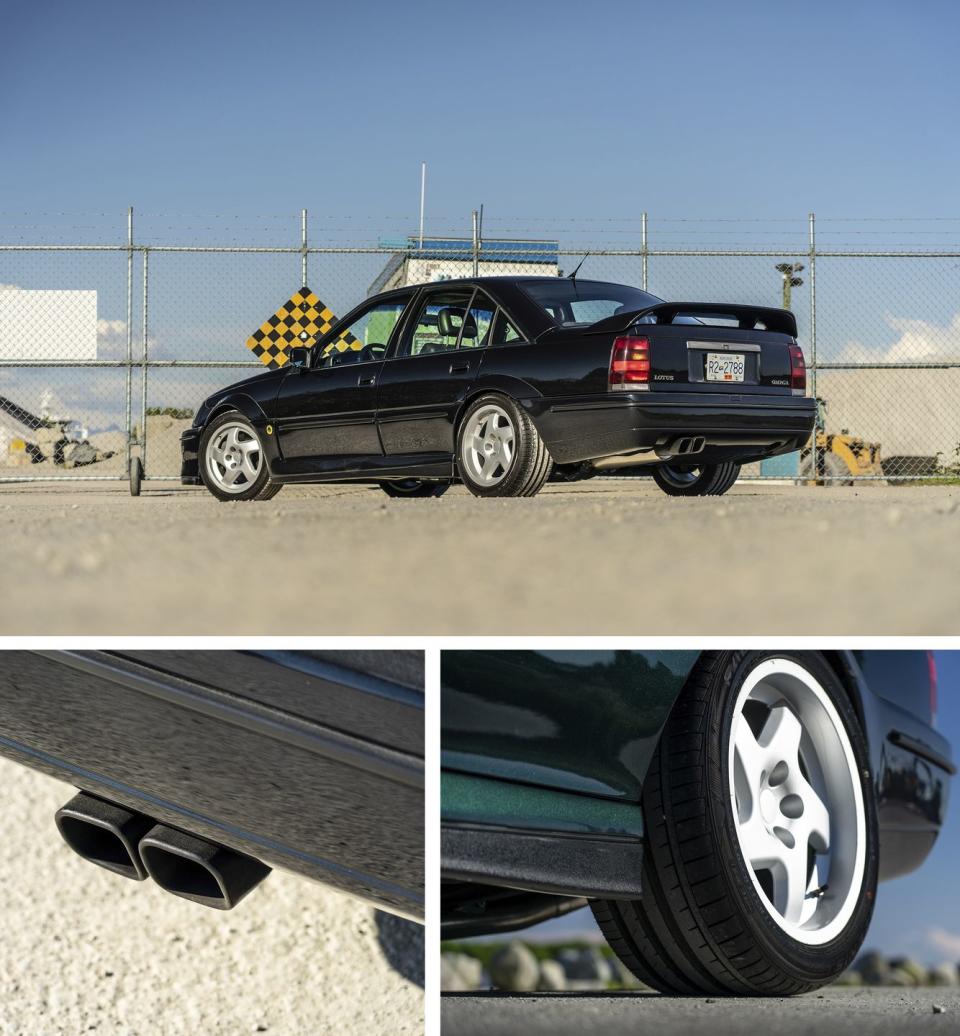
To be blunt, this is not the kind of car you'd tend to associate with Lotus. Whether it is the Sopwith-Camel-in-a-dogfight joy of an original Seven on a backroad, or the “Handling by Lotus” badge on an Isuzu Impulse RS Turbo, Colin Chapman's brand identity is all about finesse, and elegance, and ballet. The Omega and Carlton are basically haymakers with no traction control and manual transmissions. But they are tools fit for purpose, and that purpose was absolutely bludgeoning speed.
The idea for these cars had a somewhat protracted birth. GM had snapped up Lotus at the beginning of 1986, hoping to infuse some of the General's products with some British racing engineering expertise. Among other things, the tie-up would eventually lead to the C4 Corvette ZR-1's LT5 DOHC V8.
Lotus initially pitched GM Europe on a quick version of the Senator, but eventually was given the go-ahead on the Omega/Carlton instead. Production was comically inefficient: fully completed cars arrived in Hethel direct from Germany, and immediately had to be hacked apart. The wheel wells were cut out using plasma cutters, flares to cover the wider wheels were fitted, and then the whole thing needed to be re-weatherproofed. It was the same story with fitting the Corvette six-speed into the transmission, to say nothing of the work required in the interior of the car. Each Lotus Omega and Carlton produced took roughly 130 man-hours to build.
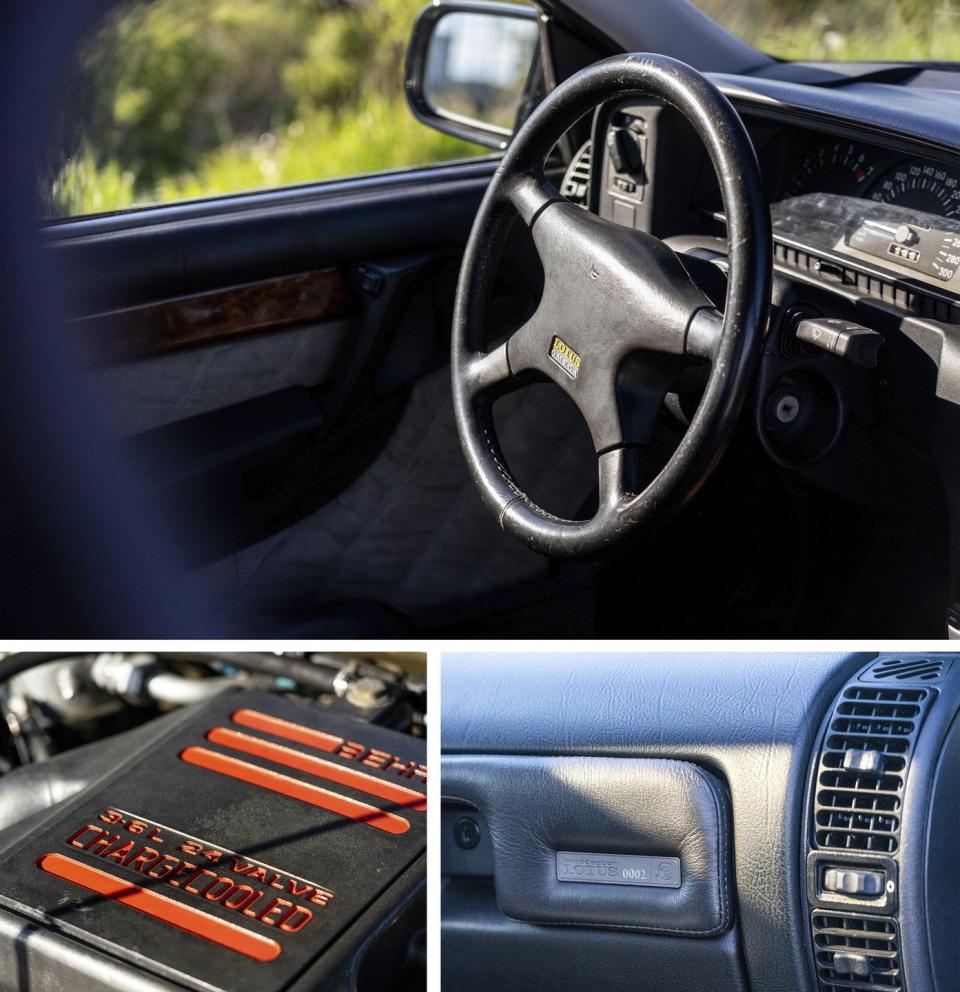
Other upgrades included AP Racing brakes, Goodyear Eagle tires like those found on the Esprit Turbo, and the differential out of an Australian Holden Commodore. 320 Carltons and 630 Omegas were produced between 1990 and 1992, every one of them painted a dark Imperial Green. This figure was a little short of the 1100-unit run planned by Lotus, but the recession of the early 1990s dampened demand.
They are not easy to find. Jaeckel searched for years before finding this example, and reports that parts are difficult to come by. He recently entered it at the well-attended All-British Field Meet in Vancouver, BC, where it often bemused casual attendees, unsure of what it was. Both the Lotus Omega and Carlton are something of a secret handshake even in Lotus enthusiast circles. They are, in many ways, the ultimate sleeper sedan.
On Thursday, the sixth of January, 1994, a Lotus Carlton with the registration plate 40RA smashed through the shop window at a newsagent's in the somewhat ironically named village of Rubery, Worcestershire. Despite being scarcely thirty yards away from a police station, two brazen thieves looted alcohol and cigarettes from the store, then climbed back in their car and floored it. They got away clean.
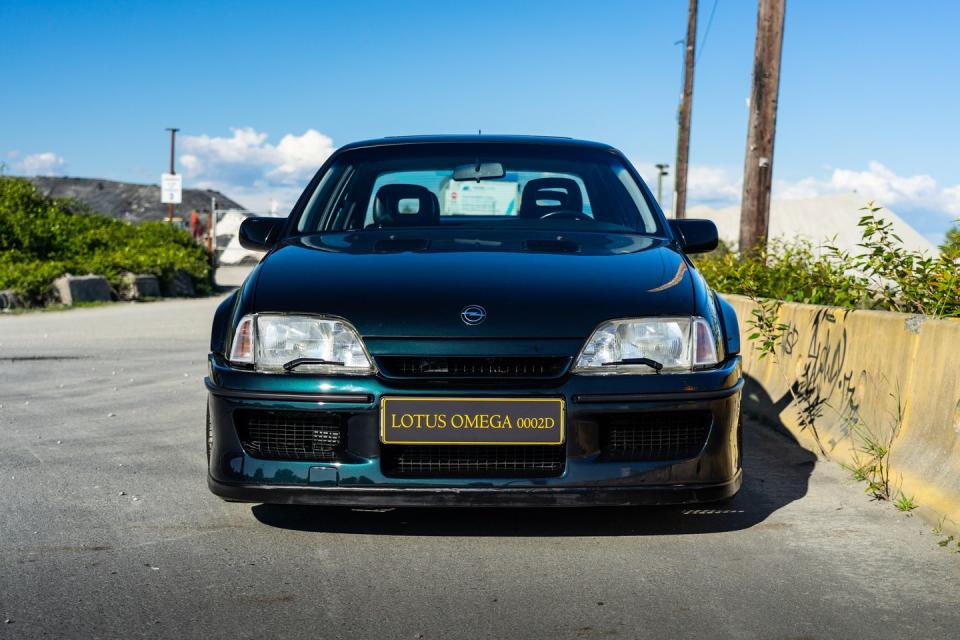
It was part of a spate of a half dozen robberies that bagged the equivalent of $40,000 in stolen goods. “We simply haven't been able to get near the thing, and it looks unlikely we ever will,” said a rueful Midlands police spokesperson. In the end, it looks like the politicians were right.
Such behavior cannot be condoned. Yet, when you read the exploits of Roy “The Weasel” James and his Mk II Jag, scarpering from Heathrow with stolen gold bullion, it makes for such a good story. The Lotus Carlton/Omega may have a similarly nefarious past. They may be the only car that British Parliament officially condemned. But it is precisely because of the skullduggery that they are today legends.
It probably shouldn't have happened. But it did.
*****
You Might Also Like

